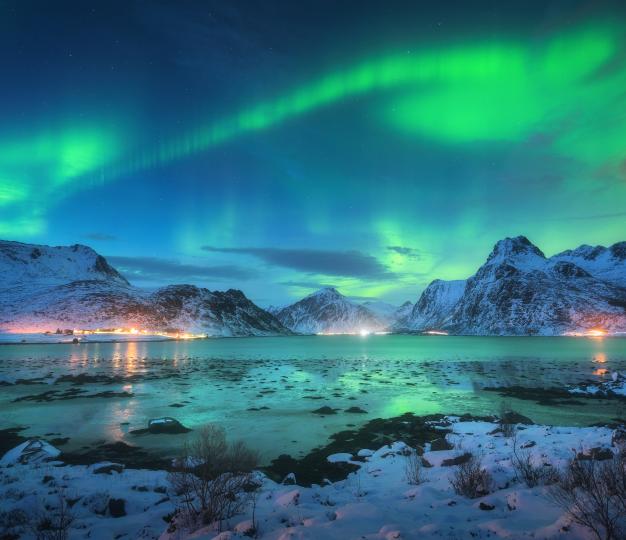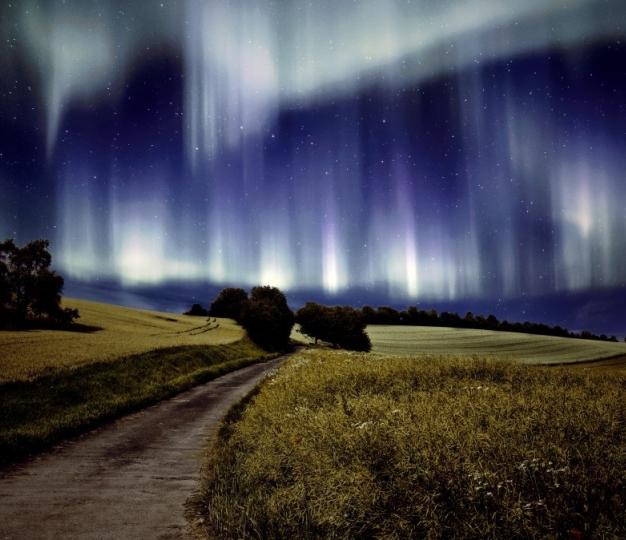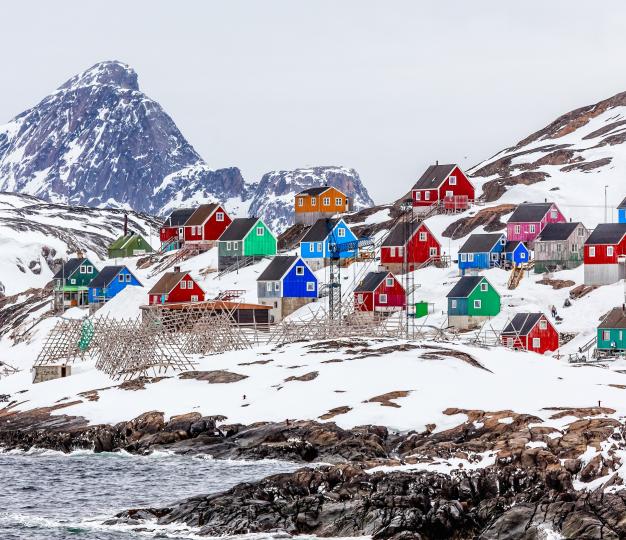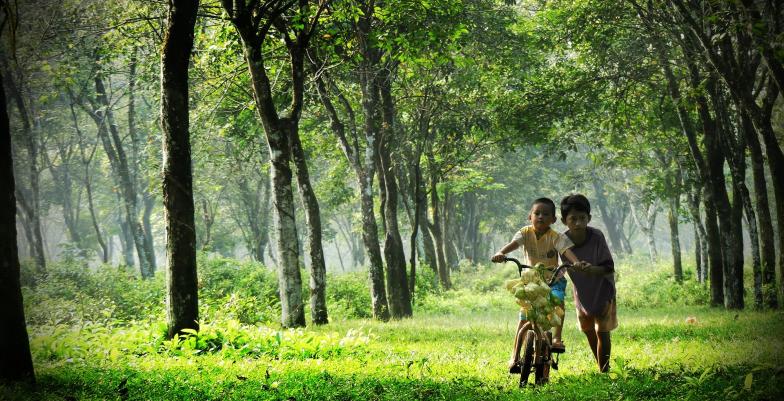The EU in the Arctic
The EU is in the Arctic and has both day-to-day and strategic interests in the region.
On This Page
- The EU’s new Arctic policy
- Sustainable Development in the Arctic
- Climate change in the Arctic
- Preserving the Arctic Marine Environment
- Thawing permafrost
- Scientific cooperation in the Arctic
- Arctic geopolitics
- The EU and the Northern Dimension
- EU cooperation with Greenland
- EU Special Envoy for Arctic Matters
- The Arctic Urban-Regional Cooperation (AURC) programme
- Youth Together for Arctic Futures
In Focus

EU-promoted sustainable development and green transition in the Arctic

EU space activities supporting sustainable life, work and research in the Arctic.

EU Contribution to Arctic Science & Innovation
The EU’s Arctic policy
We believe that a safe, stable, sustainable, peaceful and prosperous Arctic is important not just for the Arctic itself, but for the EU and the entire world. While the Arctic states hold the primary responsibility for tackling issues within their territories, many of these issues do not respect borders, and regional or multilateral cooperation can effectively address them.
The EU’s updated Arctic policy, published on October 13, 2021, aims to help preserve the Arctic as a region of peaceful cooperation, to slow the effects of climate change, and to support the sustainable development of Arctic regions to the benefit of Arctic communities, not least Indigenous Peoples, and future generations.
The implementation of the EU’s Arctic policy will help the Union to deliver the targets defined by the EU Green Deal and meet its geopolitical interests.
Suspension of regional cooperation with Russia
The EU has joined member states and key like-minded partners in suspending Russia and Belarus from the activities of various regional cooperation frameworks in response to Russia’s unprecedented military aggression against Ukraine and the involvement of Belarus in this unprovoked and unjustified aggression. The EU issued three joint statements regarding the Northern Dimension policy; Barents Euro-Arctic cooperation; and the Council of the Baltic Sea States.
NOTE: The EU takes the view that cooperation on Arctic matters with like-minded interlocutors, in relevant bodies and via suitable channels should be carried forward.
Sustainable Development in the Arctic
The EU Green Deal gives the Union a roadmap to ensure a robust green and blue transition both at a global level and in the Arctic. The EU will stimulate change in a number of key areas, including carbon-neutral energy, hydrogen, sustainable extractive industries, e-based learning, e-health, connectivity and infrastructure, sustainable tourism, green technologies, fisheries and agriculture. The EU will push for oil, coal and gas to stay in the ground, including in Arctic regions.
Climate change in the Arctic
The EU recognises its own impact on the Arctic regions. It will tackle this impact in a coordinated manner, in close cooperation with national, regional and local authorities, and Arctic communities. The EU will act against major sources of pollution affecting the Arctic regions in the air, on land and at sea, such as plastics/marine litter, black carbon, chemicals, and transport emissions as well as unsustainable exploitation of natural resources.
Preserving the Arctic Marine Environment
The entry into force of the International Agreement to Prevent Unregulated Fishing in the High Seas of the Central Arctic Ocean is a vital step to protecting the unique richness of the Arctic waters. Signed in 2018 by the EU, Canada, Iceland, Denmark, Norway, USA, China, Japan, South Korea, and Russia, the agreement will commit the parties to not authorize any vessel flying its flag to engage in commercial fishing in the high seas portion of the central Arctic Ocean
Thawing permafrost
Permafrost is ground below surface that has been frozen for at least two consecutive years and in most cases, for hundreds or thousands of years. As global temperatures rise, permafrost thaws, releasing greenhouse gases that threaten to cause irreversible changes in the Arctic and other regions. Gaining more knowledge on this phenomenon is essential because over 70% of Arctic infrastructure and 45% of oil extraction fields are built on permafrost. In addition to black carbon, thawing permafrost risks to release pathogens, such as anthrax, or contaminants like mercury.
The EU will improve knowledge of this process, using satellite observation and measurements from aircraft, ships and ground stations. Further research is needed to develop adaptation and mitigation measures and increase knowledge of the impact on communities and sustainable development. The EU already supports these activities under Horizon 2020 in the Nunataryuk project, and in the Arctic Passion project. These projects will monitor and forecast permafrost thaw and map permafrost parameters using Copernicus satellites and in situ observations, including data provided by indigenous groups.
A key goal will be closer cooperation with the Arctic states, in creating data and services for permafrost areas to improve environmental and health security and develop mitigation measures.
Scientific cooperation in the Arctic
Reducing black carbon emissions
The EU supports the Arctic Council’s indicative target of reducing black carbon emissions that reach the Arctic by as much as 33% below 2013 levels by 2025. The EU encourages all Arctic states to ensure that their Arctic communities operate on renewables, reducing diesel (for electricity) use and reducing black carbon emissions. The EU will seek to reduce black carbon emissions through a multilateral approach with the US, Canada and others, building on the work in the Arctic Council, in line with the action announced in the recent Zero Pollution Action Plan.
EU-Polar Net
EU-PolarNet coordinates the EU Polar Cluster, consisting of the European Polar Board, the Svalbard Integrated Arctic Earth Observing System and 21 EU-funded Polar projects. The projects investigate:
- drivers and changes in Arctic biodiversity;
- transitions in Arctic coastal systems; ice sheets and sea level rise projections;
- adaptation and sustainable development in the Arctic;
- capacity building in Arctic standardisation
Read more on Pg 13 of the Joint Communication on the updated Arctic Policy
Health in the Arctic post Covid-19
The EU will aim to run specific projects with the World Health Organisation and the authorities of the most affected Arctic regions to strengthen and share knowledge and best practices on disease outbreaks, natural disasters, and other threats to wildlife, plants and humans from climate change and environmental degradation.
It will support the work of the ‘One Arctic, One Health’ project, managed by the Arctic Council’s Sustainable Development Working Group; the Arctic Council pays particular attention to the situation of Indigenous Peoples.
Arctic geopolitics
Recent years has seen a rapid increase in the number of countries taking an interest in Arctic matters. This risks turning the Arctic into an arena of geopolitical competition and potentially harming the EU’s interests. Besides a growing interest in Arctic resources and transport routes, there has also been an increase in military activities. The EU has a strong interest in maintaining good international cooperation. It will mainstream Arctic matters in its diplomatic relations and build on its engagement in regional bodies.
The EU and the Northern Dimension
The Northern Dimension (ND) is a common policy of the EU, Russia, Norway and Iceland. Belarus is one of the observers of the policy. Due to Russia’s unprecedented military aggression against Ukraine and the involvement of Belarus in this aggression, the EU, Iceland and Norway suspended until further notice all activities of the Northern Dimension policy which involve Russia and Belarus, with a joint statement published on 8 March 2022.
The Northern Dimension policy was initiated in 1999, and renewed in 2006. The four ND Partnerships deal with: i) Environment (including nuclear safety); ii) Public Health and Social Well-being; iii) Transport and Logistics; and iv) Culture. The Northern Dimension Institute serves the information needs of the policy.
The Northern Dimension Environmental Partnership (NDEP) improves wastewater treatment in the Baltic Sea catchment area and tackles black carbon emissions. Projects are implemented through the NDEP Support Fund (EUR 350 million in total) managed by the European Bank for Reconstruction and Development (EBRD).
The Nuclear Window of the NDEP is a multilateral funding mechanism aimed at addressing risks associated with the Soviet-era nuclear legacy in North-West Russia. The Barents Sea area has one of the largest accumulations of spent nuclear fuel and radioactive waste in the world. Contributors have provided EUR 166.3 million to the Nuclear Window since 2002. The EU has contributed EUR 44 million for the environmental window and EUR 40 million for the nuclear window.
NDEP projects have dramatically improved the environmental condition of the Baltic Sea and reduced the danger of radiological contamination of the Arctic Sea.
EU cooperation with Greenland
Under the Overseas Association Decision, Greenland has a wide-ranging political and policy dialogue with the EU, preferential trade arrangements to access the EU market and is one of the largest recipients of EU support per capita in the Overseas Countries and Territories (EUR 225 million foreseen between 2021 and 2027). This supports Greenland’s sustainable development and diversification of its economy. So far, long-term EU cooperation has in particular contributed to strengthening the education system and enhancing learning opportunities, as knowledge and skills are essential for Greenland’s socio-economic development.
The 2021 renewed EU-Greenland Sustainable Fisheries Partnership Agreement is an important milestone in the long-standing cooperation between the two, promoting sustainable use of marine resources. The EU is seeking to deepen and broaden its partnership with Greenland, including possible cooperation on issues related to green growth.
A permanent presence of the EU in Greenland would be a strong signal to enhance our partnership and the visibility of EU actions on the ground, for example through the establishment of a European Commission Office on Greenlandic territory.
EU Special Envoy for Arctic Matters, Claude Véron-Réville

In September 2024, Ms Claude Véron-Réville took up the role as Special Envoy for Arctic matters.
The EU institutional engagement in Arctic matters is based on the EU Arctic policy, with the most recent Joint Communication published in October 2021. In her role as Special Envoy for Arctic Matters, Claude Véron-Réville is working to drive forward the EU’s Arctic policy in collaboration with Commission services. She is also working with EU Member States in the Council and the European Parliament as well as with the EU’s external partners.
Climate change remains the most comprehensive threat to the Arctic regions and the globe, but it is clear that other issues are also demanding attention. These include interests in resources in Arctic regions such as fish, gas, oil, coal and critical raw materials etc. The Arctic regions are also becoming increasingly interesting for installation of wind farms, data centers, cables and similar equipment. Careful consideration has to be given to local inhabitants including indigenous peoples, maritime safety and sensitive ecosystems.
The Arctic Urban-Regional Cooperation (AURC) programme
Youth Together for Arctic Futures












